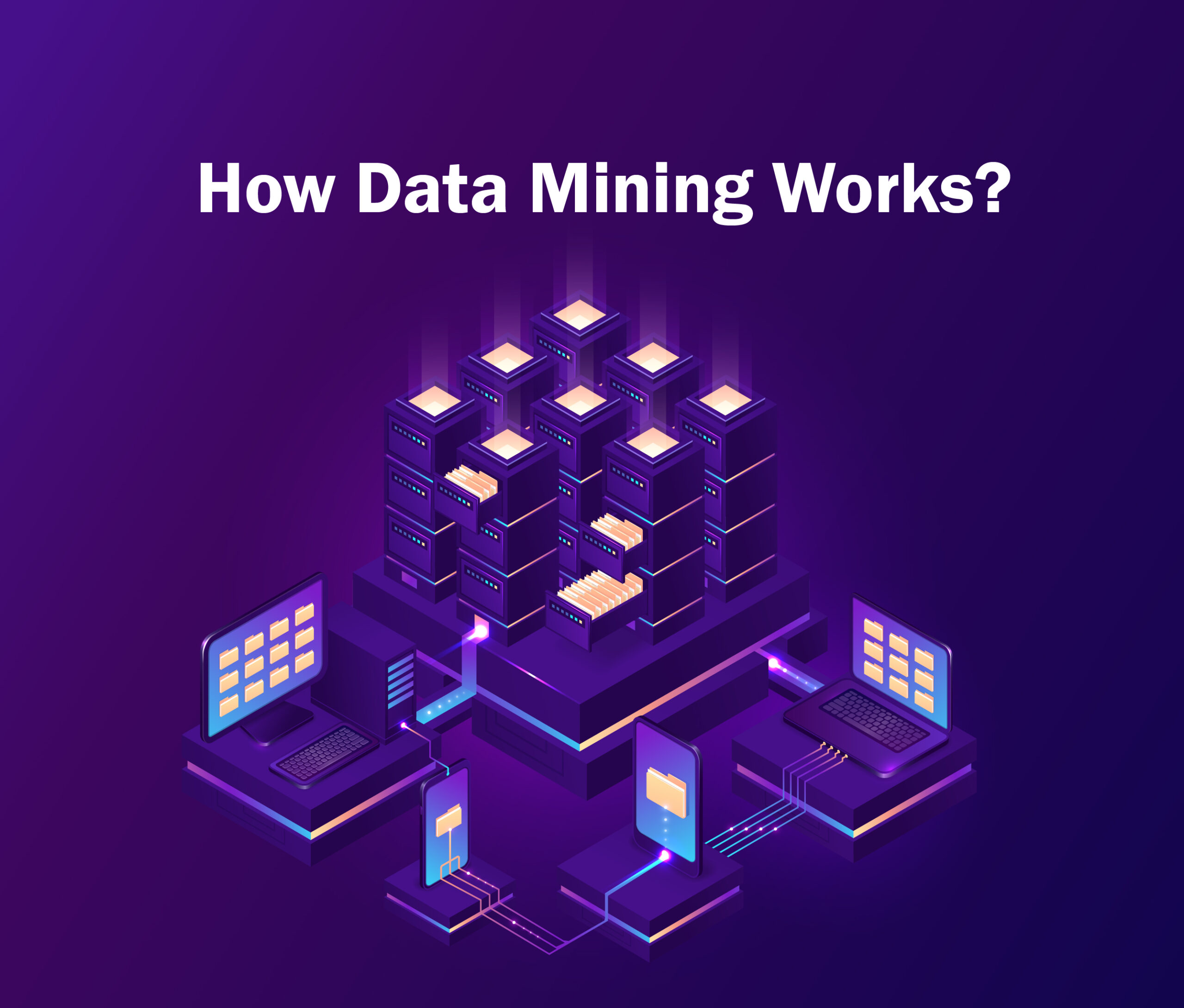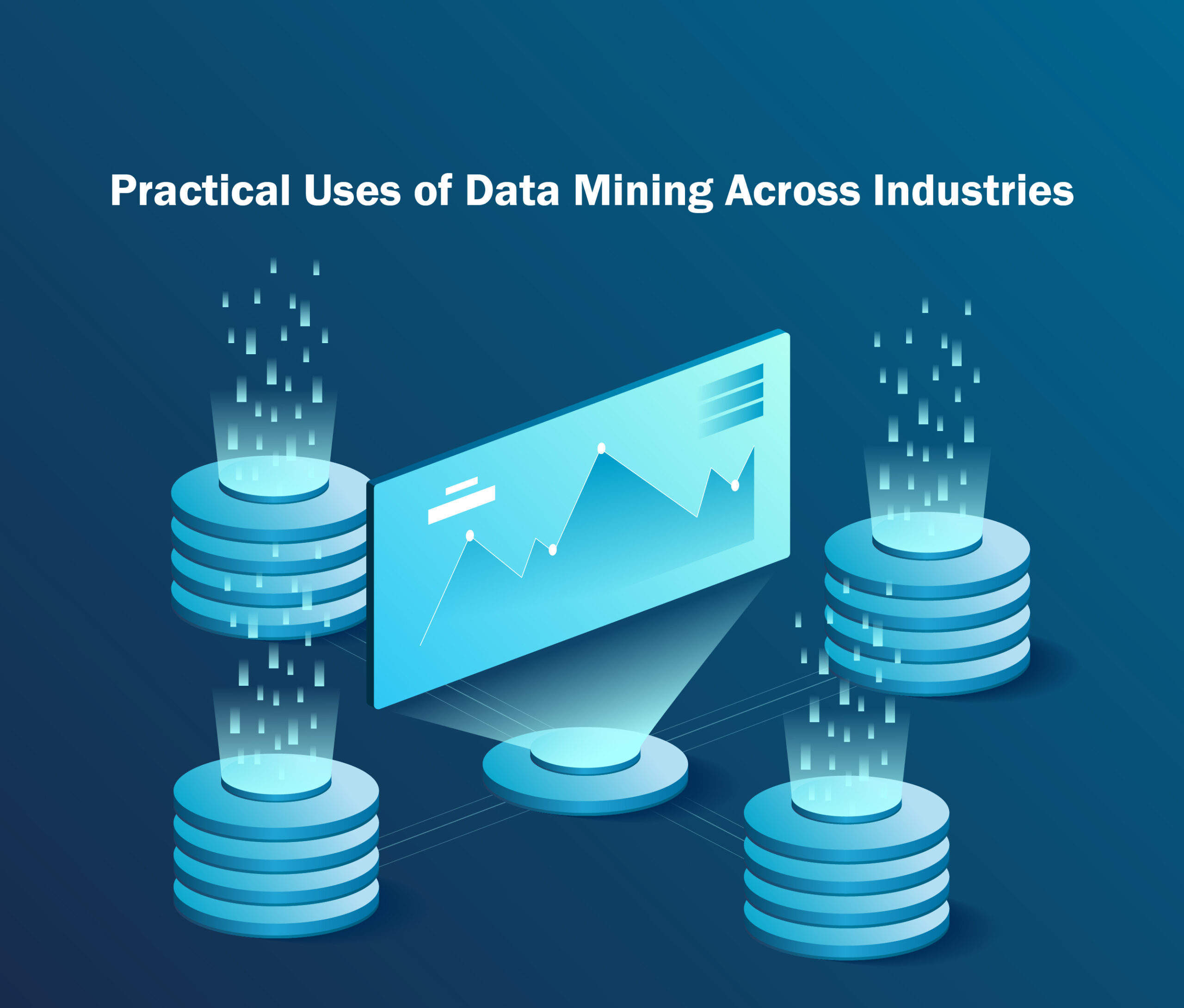In today’s data-driven world, we’re constantly bombarded with information from every direction. But have you ever wondered what lies beneath the surface? What untapped potential lies hidden within those mountains of data?
Data mining plays a crucial role in this digital age. It allows us to be explorers, going through massive datasets in search of valuable insights and patterns that can potentially transform the way we approach various tasks and challenges. Without further ado, let’s understand everything about it.
What is Data Mining?
Data mining is the process of sifting through extensive raw data to unearth patterns and valuable information. It plays a crucial role in business strategies, helping companies enhance their marketing efforts, boost sales, and reduce costs. This process relies on effective data collection, storage, and computational analysis.
How Data Mining Works?
 Data mining explores large datasets to extract meaningful trends, making it vital in credit risk management, fraud detection, and spam filtering. It’s also a valuable tool for market research, revealing the sentiments and opinions of specific groups. Below are the four key steps involved in this process:
Data mining explores large datasets to extract meaningful trends, making it vital in credit risk management, fraud detection, and spam filtering. It’s also a valuable tool for market research, revealing the sentiments and opinions of specific groups. Below are the four key steps involved in this process:
- Data Collection: Raw data is gathered and stored in data warehouses, whether on-site or through cloud services.
- Data Organization: Business analysts, management, and IT professionals determine how to structure the data.
- Data Sorting: Custom application software arranges and organizes the data.
- Data Presentation: The end-user presents the organized data in user-friendly formats, like graphs or tables.
Data Warehousing and Mining Software
Data mining software analyzes data to identify patterns based on user-defined criteria, organizing it into classes. For instance, a restaurant might use mining to decide which specials to offer based on customer visits and orders. This technique can also uncover clusters of information, logical relationships, associations, and sequential patterns to understand consumer behavior trends.
Data warehousing is a critical component, centralizing an organization’s data into one database. This enables the organization to provide specific data segments for analysis, catering to the needs of various users.
Exploring Data Mining Techniques
Data mining employs various techniques and algorithms to transform vast datasets into valuable insights. Key techniques include:
- Association Rules: These seek relationships between variables, uncovering connections within data. For example, they identify products often purchased together, aiding businesses in planning and promotion.
- Classification: This method assigns predefined classes to objects, allowing data to be neatly categorized based on common characteristics, aiding in summarization and analysis.
- Clustering: Similar to classification, clustering identifies similarities between objects and groups them based on their differences, facilitating data grouping and pattern recognition.
- Decision Trees: Used for classification and prediction, decision trees sort data based on a series of criteria or decisions, providing a structured way to analyze and make decisions.
- K-Nearest Neighbor (KNN): This algorithm classifies data by its proximity to other data points, assuming that close data points are more similar. It is used for predicting features based on individual data points.
- Neural Networks: These networks use interconnected nodes with inputs, weights, and outputs, resembling the human brain’s interconnected structure. Neural networks are employed for supervised learning and modeling with threshold values to determine accuracy.
- Predictive Analysis: Leveraging historical data, predictive analysis builds models to forecast future outcomes, aiming to estimate unknown future values based on existing data, often overlapping with regression analysis.
Practical Uses of Data Mining Across Industries
 The practical uses of this technique showcase the diverse applications across diverse industries and domains. Some of them are given below:
The practical uses of this technique showcase the diverse applications across diverse industries and domains. Some of them are given below:
- Sales: It revolutionizes sales by optimizing capital utilization for revenue growth. Take your local coffee shop, for example. Each sale transaction captures details such as the time of purchase and the products sold. By analyzing this data, the coffee shop can strategically shape its product offerings to cater to customer preferences.
- Marketing: Once the coffee shop identifies its ideal product line, it can enhance its marketing efforts. This technique empowers businesses to determine the most effective ad placements, target demographics, digital advertising locations, and resonating marketing strategies. This includes aligning marketing campaigns, promotions, cross-selling initiatives, and programs with the insights gained.
- Manufacturing: For manufacturing companies, it is instrumental in analyzing the cost of raw materials, material efficiency, manufacturing process optimization, and identifying bottlenecks. It ensures smooth goods production and uninterrupted flow.
- Fraud Detection: This technology excels at detecting irregularities and uncovering connections within datasets. Companies can employ mining techniques to spot outliers or unexpected correlations, such as recurring transactions to unknown accounts. It helps identify potential fund mismanagement, triggering necessary investigations.
- Human Resources: Human resource departments hold a wealth of data, including retention rates, salary structures, benefits utilization, and employee satisfaction. It can correlate this information to better understand reasons for employee departures and factors that attract new hires.
- Customer Service: Customer satisfaction can be influenced by numerous factors. For example, a company involved in shipping goods may face customer dissatisfaction related to delivery times, service quality, or communication. This technique aggregates operational data on customer interactions, providing insights into weaknesses and strengths in the company’s operations, from shipping to customer service response times.
Some of the prominent companies involved in this field include IBM, Oracle, Amazon, and many others.
Bottom Line
In today’s digital age, businesses have access to an abundance of data about their customers, products, manufacturing processes, employees, and physical locations. While this information may seem like disconnected puzzle pieces at first glance, the application of data mining techniques and tools allows companies to extract meaningful insights and create a cohesive narrative from these disparate sources. The ultimate aim of this process is to gather and analyze data in order to inform and implement operational strategies.


